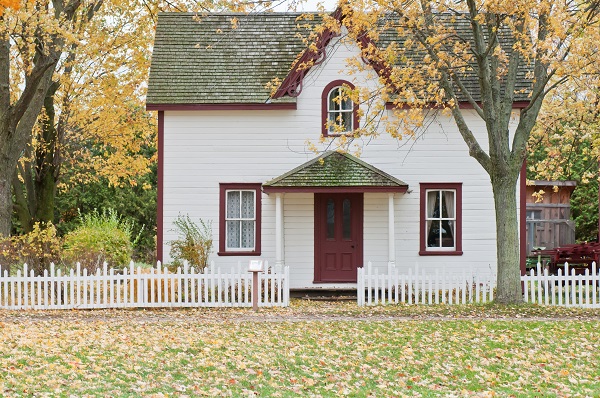
No matter where you live, investing time caring for your landscape now will pay off with a healthier, more beautiful landscape next spring and for years to come. Incorporate the following practices into your fall maintenance to support pollinators and the plants in your landscape.
Don’t rake the leaves to the curb or haul them to your municipality’s composting center. Instead, handle them with your lawn mower. Shred leaves and leave them on the lawn as you mow this fall. As the leaves break down, they add organic matter to the soil and as long as you can see the grass through the leaf pieces, the lawn will be fine.
Put any extra fall leaves to work in the garden. Add shredded leaves to your compost pile or dig them into annual gardens as a soil amendment. Just dig a two-to-three-inch layer of shredded leaves into the top 12 inches of annual or new planting beds. The leaves will decompose over winter adding organic matter to the soil. By spring, your garden bed will be ready for you to finish preparing and planting.
Spread some of the fall leaves on top of the soil around permanent plants as mulch. They help insulate the roots, conserve moisture, suppress weeds, and as they break down improve the soil. Fall mulching gives you a jump on next spring’s landscape chores. It also provides winter homes for some beneficial insects and insulation for bumblebee queens, frogs, and others that overwinter in the soil.
Leave healthy perennials to stand over winter. They will add motion and texture to the landscape. The seedheads add beauty and many provide food for the birds. Hollow stems of a variety of perennials provide winter homes for many native bees and other beneficial insects. This also increases winter survival as research found perennials left standing are better able to tolerate the rigors of winter.
Be sure to cut back and dispose of any diseased or insect-infested plants. Removing these reduces the source of disease and insect pest problems in next year’s garden. Use a bypass pruner to cut the plants back to just above the soil surface.
Continue watering throughout the fall and only during the day when soil and air temperatures are at or above 40°F. Trees, shrubs and perennials suffering from drought stress in fall and early winter are more subject to root damage and subsequently insect pest and disease problems. Make sure new plantings, moisture lovers, evergreens and perennials in exposed sites are thoroughly watered when the top four to six inches are crumbly and slightly moist.
Add some new plants to the landscape this fall. The soil is warm, and the air is cool, providing excellent conditions for planting and establishing trees, shrubs and perennials. Include some fall favorites like pansies, asters and mums to containers and garden beds for instant color and food for late-season pollinators. Many garden centers add healthy new plants to their inventory specifically for planting this fall. Read this article for more information on how to design an all-season perennial flower garden for fall.
No matter where you live or what the size of your garden is, get outdoors and enjoy the beauty of fall. And be sure to invest a bit of time and energy now to ensure your landscape is ready for the season ahead.
Melinda Myers has written more than 20 gardening books, including Small Space Gardening. She hosts the “How to Grow Anything” DVD series and the Melinda’s Garden Moment TV & radio segments. Her website is MelindaMyers.com.




Comment here